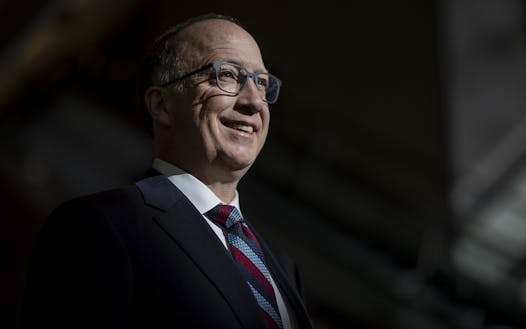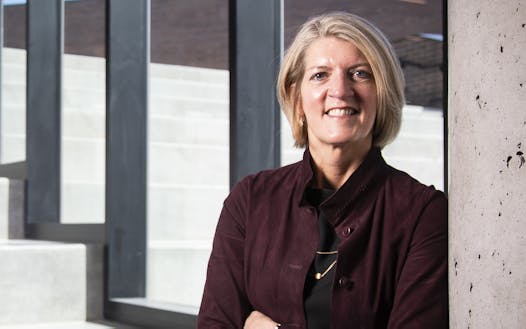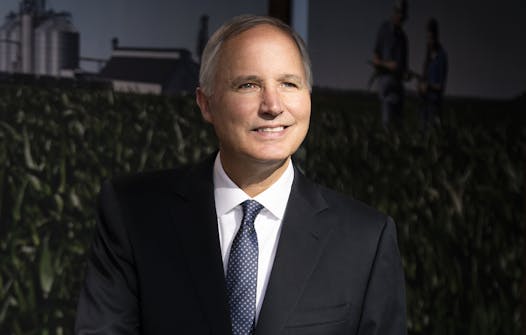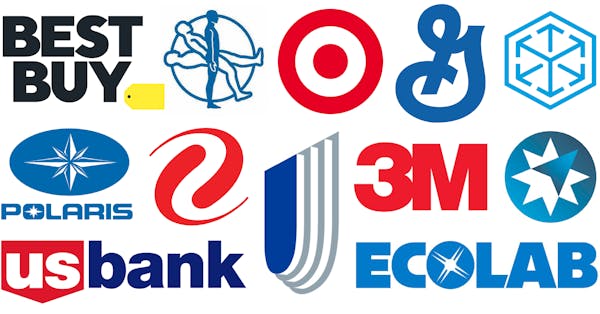There are more ways for companies to have shareholders other than trading on a major stock exchange.
And if you use a broadened definition, as the Fortune 500 does, Minnesota has three more top 500 companies and a fourth that comes in at No. 506 on the magazine's list for 2019, released in mid-May.
All four are familiar names to Minnesotans: CHS Inc., Land O'Lakes, Thrivent Financial and Securian Financial. They all have long histories going back 90 to 140 years. Their branding can be seen across the Twin Cities. The St. Paul Saints play at CHS Field. Land O'Lakes is a major sponsor at U.S. Bank Stadium and at the University of Minnesota. Securian has rebranded its St. Paul headquarters, and Thrivent is building a new office building in Minneapolis.
These four companies aren't on the Star Tribune 50 list, like Target Corp. or 3M, because they do not have common stock traded on exchanges. Their members are their owners.
And their long histories make these four companies unlikely to decamp from Minnesota as other publicly traded firms have in recent years.
In the 1990s, there were more than 200 companies in Minnesota that traded on major exchanges. Mainly through acquisitions, but also from some dissolutions and headquarters moves, that number is now fewer than 100. (In fact, the Star Tribune has broadened requirements for the public company list to include companies like Medtronic or Pentair, officially headquartered in other countries but with its management team locally based.)
Yet add in some of the country's largest member-owned companies — which include cooperatives, fraternal-benefit societies and mutual holding companies — and the Minnesota economy is much more nuanced.
CHS and Land O'Lakes were among the three biggest agricultural cooperatives in the country in 2017, according to the U.S. Department of Agriculture. In total, Minnesota was home to 170 ag co-ops, more than any other state. What's more, 11 of the 100 largest co-ops are based in the state, and all of those were larger than IntriCon Corp., which took the last spot on the Star Tribune 50 with revenue of $116.5 million.
Inver Grove Heights-based CHS Inc. had $33.1 billion in annual revenue last year and would rank No. 4 on our Star Tribune 50 list just ahead of 3M Co. Arden Hills-based Land O'Lakes — whose revenue grew the fastest last year among the membership-based organizations, a rise of 8.7% to $14.9 billion — also would rank in the top 10.
Thrivent at $8.7 billion in annual revenue and Securian, which made its debut on Fortune's 2018 list but slipped to No. 506 this year primarily due to lower pension risk transfer (PRT) sales, would rank in the top 20.
"Our commitment includes being in business for 90 years and making sure we operate this company to be here another 90 years," said Jay Debertin, chief executive at CHS. "That means we invest in facilities across our trade territories. We work hard at being a strong company that can handle the cycles of agriculture so that we are here for the next 90 years. We work hard at turning the profits we make into cash that goes out to rural America."
The longevity 'genius'
Traditional investor-owned firms like those on the Star Tribune 50 are created to pursue a market opportunity with new or improved products and services. Investors in those firms might expect little else from the company than a profitable return on their investment, so while some companies like 3M are long-lived, others are acquired because it's the best financial decision for shareholders.
Membership-based organizations' formations were historically defensive in nature, whether it was small farmers banding together so they would not be exploited by middlemen or fraternal organizations that gave immigrant or religious groups access to financial products that many were unable to get easily elsewhere.
The key to cooperatives' longevity is "cooperative genius," said Michael Cook, professor at the University of Missouri and executive director of the Graduate Institute of Cooperative Leadership who has studied the longevity of cooperative organizations.
Among the North American cooperatives Cook studied, the average age is 75 to 90 years, partly because their structure, history and ownership tend to be more complicated than those firms traded on exchanges.
The average age of companies on the S&P 500 index was 20.2 years as of Jan. 1, 2018, according to Esgauge, an ESG intelligence and analytics firm that collects data on companies in the index.
"The low average age is surely the result of the profound transformation of the makeup of the S&P 500 in the last 30 years, for the increased M&A and buyout activities and the phenomenal growth of many new-economy companies," said Matteo Tonello, a managing director at the Conference Board, a business membership and research association.
Like cooperatives, fraternal organizations are similarly long-lived. According to the American Fraternal Alliance — which advocates for 60 fraternal benefit organization members, including Thrivent — most fraternals were formed early in the 20th century, although some came to be shortly after the Civil War.
"The incredible longevity of these organizations is a testament to their adaptability, financial strength and the strong bond of shared values among their members," said Joseph Annotti, the alliance's CEO.
Members of these organizations also elect their board of directors and may sell and purchase products from the companies. CHS members might buy seed, fertilizer, ag-chemicals and fuel from CHS and then turn around and sell the grain they produce back to CHS. Depending on the type of membership organization members might also get other benefits.
"What distinguishes a fraternal-benefits society from the other insurance companies is this whole notion that, as a membership organization, we want to engage our members," said Thrivent CEO Terry Rasmussen. To that end, Rasmussen said Thrivent helps members raise funds for other nonprofits and charities, sponsor Habitat for Humanity projects, and through their Thrivent Choice program, allows members to direct some of Thrivent's profits to over 45,000 nonprofits and church organizations.
"If you're a benefit member, you have the ability to direct our benevolence to organizations that you care about," Rassmussen added.
Input also is a benefit for cooperative members.
"[Members] really have direct influence in the governance of the company. The farmers and local cooperatives elect our board, and the board ultimately sets the strategy for the company. So they have direct influence in the governance as well," said CHS' Debertin.
Company growth
While these four organizations face the same competitive pressures that investor-owned firms do, they also face challenges to the changes in their membership. All four companies have relatively new CEOs who are tackling the economic tides that all large companies are tackling — demographic changes and the global economy among them.
For Thrivent, that meant extending membership requirements in 2013 from Lutherans to all Christians. "We were really pleased that members who had been with us for a long time voted to extend the common bond," Rasmussen said of the vote.
Securian has responded to the need for change by, among other things, setting up an innovation lab, developing new digital tools to help employees choose benefits and investing in technology relationships with other companies.
"Every company in every industry has challenges," said Securian Financial CEO Chris Hilger. "It's no exception for us. … I believe the biggest challenge is — the pace of change that we are confronting."
At Land O'Lakes, leaders are dealing with trade and tariff issues, low commodity prices, a tight labor market and more. But it's the challenge that Beth Ford was seeking when she became CEO last year.
"I love a messy environment that requires that we use our innovation our insights, we get our boxing gloves on and we get out there and compete in the marketplace," she said. "That's exciting."
Includes reporting by Star Tribune staff writer Evan Ramstad.
Buffalo Bills owner Terry Pegula explores selling non-controlling, minority stake in franchise
Stock market today: Tumbling tech stocks drag Wall Street to the finish line of another losing week
How major US stock indexes fared Friday, 4/19/2024
American Express, Fifth Third rise; Netflix, PPG Industries fall, Friday, 4/19/2024
![Capella Tower at 225 South Sixth St. Tuesday September 6, 2011. ] GLEN STUBBE * gstubbe@startribune.com Minneapolis skyline from the 51st floor of IDS](https://arc.stimg.co/startribunemedia/7C263DJZQTPRDEXI74SMH2M3HI.jpg?h=91&w=145&fit=crop&bg=999&crop=faces)






